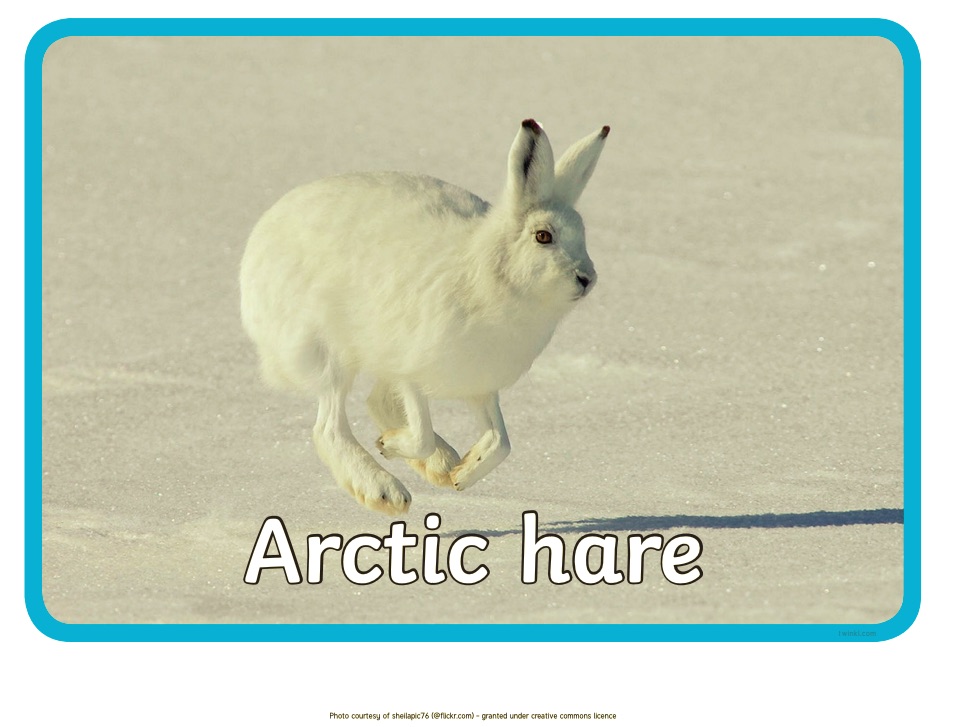

Deserts, grasslands, rainforests, reefs and tundra seem very different from each other, but they are all examples of biomes. They each have their own sets of animal and plant life and particular weather and climate conditions. Biomes each have their own ecosystems (communities of organisms and the environment they live in) that allows animals and plants to thrive.
To explore the tundra and arctic a little more with your children, try out our interactive story 'The Girl Who went to the Arctic'.

The tundra is a biome characterised by freezing weather, very little rain and few nutrients for animals and plants. There is also a very short growing season within the tundra biome. Even though the climate and lifestyle is very harsh, there are a selection of tundra animals and plants who call this biome their home.
There are two types of tundra found throughout the world: arctic, and alpine.
Although the amount of biodiversity (different animal and plant species) in the tundra is very low, there are a selection of who have made their home in this environment. They do so because they have developed adaptations to their bodies, diets and methods of survival that allow them to continue thriving in a frigid environment.
A number of different mammals can survive in tundra habitats thanks to special adaptations (e.g. insulating fur and fat). A prominent example of this adaptation is the musk ox. As one of the largest arctic tundra mammals, the musk ox uses a thick, dense coat to keep itself warm and combines it with lots of fat and a short legs and tail to reduce the loss of body heat.
Other mammals such as arctic hares, squirrels and voles also use dense fur to insulate themselves. Other herbivores such as caribou use hooves to support themselves in the thick, cold snow.

Unlike mammals, who live in the tundra all year round. Many tundra birds are migratory, which means they only travel to the tundra during the warmer summer period. These include:
Often these animals, such as the snowy owls, have developed completely white feathers to make it difficult for predators to spot them against the snow.
There are very few insects that manage to survive in the tundra, their small size means that heat escapes their bodies very easily. The exception to this is the tundra bumblebee, which has very dense, thin hairs that guard against heat loss. The tundra bumblebee also uses its wings and legs to generate heat by vibrating them and rubbing them very quickly.
A large part of the tundra food web is the fish family. Cod, flatfish, salmon, seals, and whales are just a few of the species that are found in these waters. Many tundra fish lower their metabolism, and the freezing temperature of their cells using chemicals. Some fish, such as the tundra lake trout, grow much slower than fish in other biomes - taking up to 10 years to mature!
Get creative with a few of our Arctic Animals Colouring Sheets.
Plants make up the largest section of the tundra ecosystem, with over 1700 different species of plants. Many of these plants have developed furry or wax-like coatings to ward off the cold temperatures and use short, wide roots to catch as many nutrients as possible in the tundra soil.
For those science lessons, learn about how plants designed special adaptations to survive the frigid north using our Polar Region lesson plan.

Life in all biomes on earth include producers (plants and similar organisms) and consumers (organisms who eat producers or other consumers). The producers and consumers in a biome can be illustrated using a food chain, moving from the smallest producer to the biggest consumer, or a food web, an interconnected map showing which animal consumes which others.
If you are teaching about the complex world of food webs, use our Cold Environments Knowledge Organiser.
Often, a simple food chain does not capture how complex a biome or ecosystem can be. A food web (such as the tundra food web) illustrates the overlap between multiple different food chains and captures how each animal or plant interacts with every other.
A tundra food web would begin with the various plant species (dry shrubs, and mosses, grasses and lichens) followed by the primary consumers (herbivores) such as caribou, hares, oxen and lemmings. The next ring of the web would be the omnivores and carnivores (secondary consumers) such as foxes, bears, wolves and whales.
As we discussed earlier, the tundra is divided into two types: arctic and alpine. When we combine both arctic and alpine tundra biomes, the tundra makes up about 17-20% of the Earth's land surface.
Tundra conditions are very difficult to live in permanently because of its low temperatures and treeless plains (the word 'tundra' originally comes from the Finnish word, 'tunturi', which means “treeless place”), however some plants and animals have adapted to be able to survive here. Below, we’ll look at both arctic tundra biome facts and alpine tundra biome facts.
Arctic tundra biome facts
Alpine tundra biome facts
If your class is learning about biomes, why not set them a research project to look for some more alpine or arctic tundra biome facts and present their findings to the class? You can also have a look at our wiki page on biomes for further information on the different biomes on planet Earth.
Resources
Here at Twinkl, we’ve got a whole host of resources that make planning quicker and easier, without losing any of the quality. If you’re looking for some resources to help you teach about biomes, why not have a look at some of the resources we’ve picked out below:
 Home
Home  Membership
Membership  Customer Support
Customer Support  Create
Create  Blog
Blog 






















